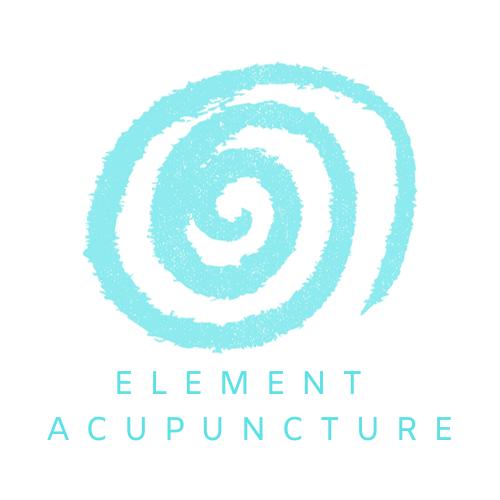MICRONEEDLING
Microneedling: What It Is, How It’s Done, and Its Benefits
What is Microneedling?
Microneedling, also known as collagen induction therapy, is a minimally invasive cosmetic procedure that involves creating tiny, controlled micro-injuries in the skin using fine needles. The goal of these micro-injuries is to stimulate the skin's natural wound-healing process, which includes increased production of collagen and elastin. These proteins help to improve skin texture, reduce the appearance of scars and wrinkles, and promote a more youthful, rejuvenated look.
How is Microneedling Provided?
Micro-needling is typically performed by licensed and insured acupuncture clinicians. The procedure involves using a specialized device, either a handheld pen or roller, with tiny needles that puncture the skin’s surface. These devices can be adjusted in needle length to customize the depth of the treatment based on skin type, target area, and desired outcome. Here’s a breakdown of how the process works:
Preparation: The area is thoroughly cleansed, and a topical anesthetic may be applied to minimize discomfort.
Microneedling Process: The practitioner glides the device over the skin, creating controlled, uniform micro-injuries.
Post-Treatment Care: After microneedling, a soothing serum or hyaluronic acid may be applied to enhance absorption, followed by sun protection. Clients are generally advised to avoid direct sun exposure, exercise, or harsh skincare products for 24-48 hours to allow the skin to recover.
Initial Consultation is required prior to any treatment. Sessions usually last about 15 to 60 minutes, depending on the treatment area, health conditions and if acupuncture is combined. For optimal results, micro-needling is often recommended as a series of treatments spaced several weeks apart, typically 3-6 weeks apart.
Micro-needling offers a safe, minimally invasive approach to improving skin texture, reducing scars, and promoting a youthful glow, with potential applications for hair restoration as well.
Cosmetic and Health Benefits of Microneedling
Micro-needling offers a range of cosmetic and skin health benefits, making it popular for individuals looking to enhance their skin’s appearance naturally. Micro-needling is for the face and the body, including scars, stretch marks and sagging areas. Microneedling has cosmetic and medical uses. You might consider microneedling if you’re concerned about:
Improved Skin Texture and Tone: Microneedling reduces fine lines, wrinkles, and rough texture by encouraging collagen production. The new collagen fibers help smooth out the skin’s surface, giving it a firmer and more even tone (Majid, 2009).
Enlarged pores.
Fine lines or wrinkles.
Loose or crepey (thin and wrinkled) skin.
Skin discolouration or uneven skin tone.
Minimizes Pore Size: The collagen production stimulated by microneedling can help reduce pore size by improving skin elasticity and density around the pores.
Enhanced Absorption of Skincare Products: Microneedling creates micro-channels that allow for better absorption of skincare products, enhancing the effectiveness of serums and topical treatments applied after the procedure (Singh & Yadav, 2016).
Skin Rejuvenation: By boosting cell turnover, microneedling helps rejuvenate the skin, giving it a healthy, radiant appearance. The skin’s increased resilience also helps it better withstand environmental stressors.
Reduction in Scarring: Studies show that microneedling can significantly improve the appearance of scars, including acne and surgical scars, by promoting tissue remodeling and collagen synthesis (El-Domyati et al., 2018).
Mild scars, especially those from acne or burns.
Stretch marks.
Cellulite.
Potential Hair Growth Benefits: Research suggests that microneedling may stimulate hair growth when used on the scalp, potentially benefiting individuals with hair thinning or alopecia (Dhurat et al., 2013).
Alopecia areata (hair loss due to an autoimmune disease).
Medical conditions:
Hyperhidrosis (excessive sweating).
Safety and Side Effects
While microneedling is generally safe, mild side effects such as redness, swelling, and slight irritation are common. These effects typically resolve within a few days. However, microneedling is contra-indicated during pregnancy, individuals with skin infections, certain medical conditions, or a tendency for keloid scarring.
FAQ’s
References
Majid, I. (2009). "Microneedling therapy in atrophic facial scars: An objective assessment." Journal of Cutaneous and Aesthetic Surgery, 2(1), 26-30.
El-Domyati, M., et al. (2018). "Microneedling: A new approach for treating scars and wrinkles." International Journal of Dermatology, 57(1), 78-85.
Singh, A., & Yadav, S. (2016). "Microneedling: Advances and widening horizons." Indian Dermatology Online Journal, 7(4), 244-254.
Dhurat, R., et al. (2013). "A randomized evaluator blinded study of effect of microneedling in androgenetic alopecia: A pilot study." International Journal of Trichology, 5(1), 6-11.

